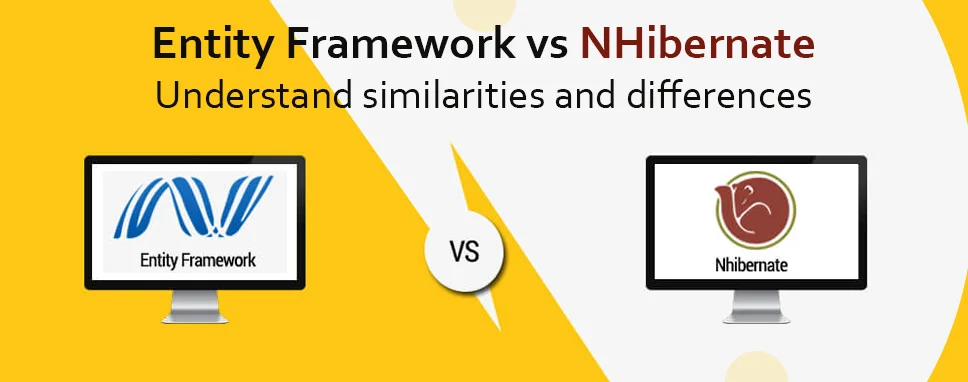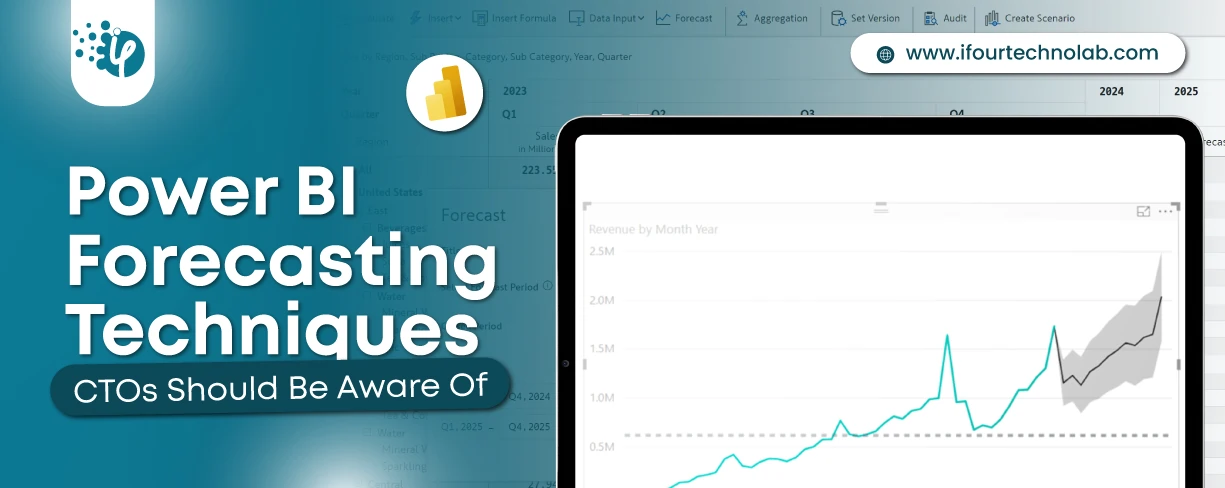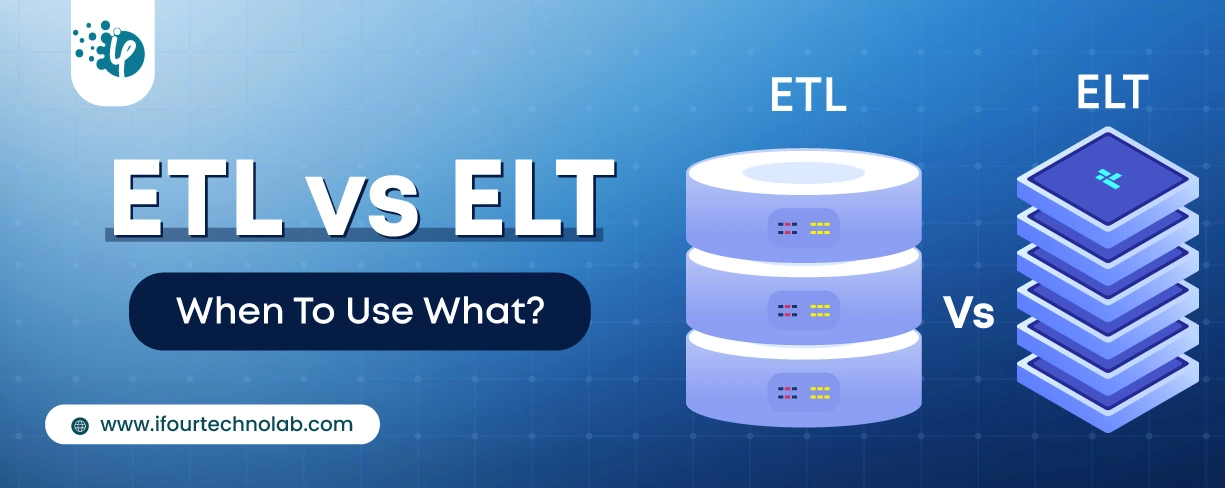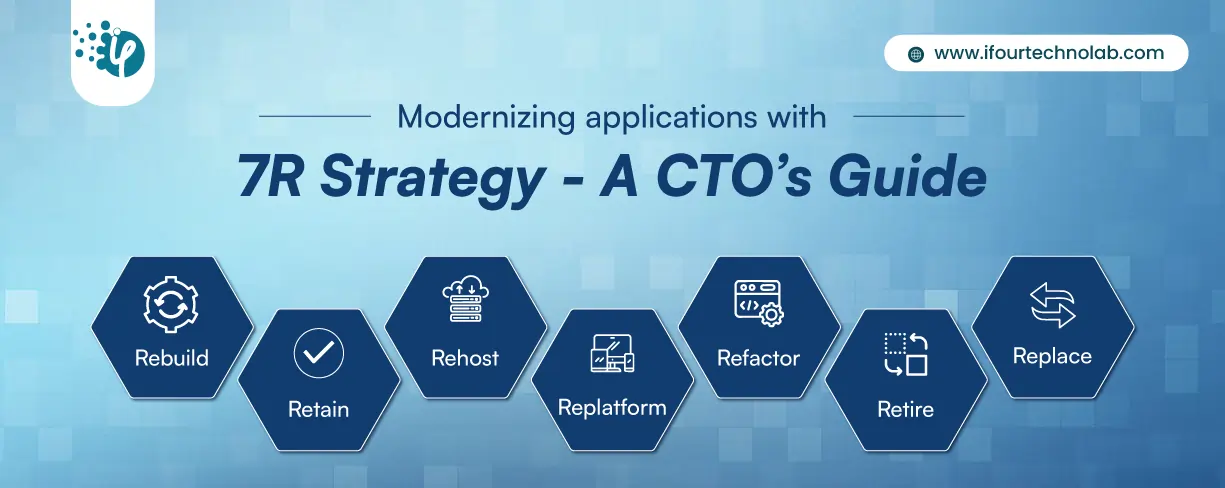How to Do Forecasting in Power BI (Steps & Accuracy Metrics)
Remember our last guide - Power BI forecasting? It revealed things that truly blocks accuracy, both structural and situational. Now it's time to take the next step. Knowing Power...
Listening is fun too.
Straighten your back and cherish with coffee - PLAY !

Entity Framework and NHibernate are Object-relational mapping frameworks (ORM) and are used to map database schema to domain objects in any object-oriented language.
In this blog, we will see the differences between Entity Framework and NHibernate.
Entity Framework is an open-source and object-relational mapping (ORM) framework and used to include business logic in the application. Entity framework developed by Microsoft and first released in 2008 and no source code was available to be used for free because of license but now it is free to be used. Entity Framework is similar to another object-relational framework and provides mechanisms for data storage and data access from the database.
Entity framework has the following features like tracking, identity relations, lazy loading, query translation so that developers need not focus on data access fundamentals.
Nhibernate is also free and open-source object-relational mapping (ORM) architecture and provides similar objectives to object-relational mapping (ORM) architecture.
NHibernate maps .Net classes to a database table and provide database query and retrievals facilities to the Asp.Net project. Object-relational mapping tools us used to map object properties to the column of the table in the database.
Version 1 -> Version 1 was released with .Net 3.5 service pack1 and provide support for model-first and database first workflow.
Version 4 ->Version 4 was released with .Net 4 and provide support for lazy loading, self-tracking, Plain object CLR object (POCOs), and generate Text template transformation toolkit (T4).
Version 4.1 and 4.3 ->Version 4.1 and 4.3 provides support for the code first development model with cleaner API and also provide migration through NuGet 4.3.
Version 5 ->Version 5 provides support for enumerated type, spatial type, table-valued function.
Version 6 ->Version 6 provide support for interceptor, logging, asynchronous operation, custom conventions, store procedure for CRUD operations.
.Net core 1 -> .Net core 1 provide basic functionalities and provide support for non-relational database and add shadow property.
.Net core 1.1 ->.Net core 1.1 provide support for mapping fields, explicit loading, connection resiliency, and APIs.
.Net Core 2 ->.Net core 2 provide support for operator, DbContext, pooling, explicitly complied queries, scalar function mappings, and self-contained entity configuration, classes.
Version 1 -> Version 1 was original and didn’t support generics
Version 2 -> Version 2 dropped support for .Net 1.x.
Version 3 -> Version 3 provides support for LINQ, QueryOver, and Lazy loading properties.
Version 3.2 and 3.3 ->Version 3.2 and 3.3 support fluent configuration and conventions, mapping of views, HQL (Hibernate query language), and integrated byte code generator.
Version 4 -> Version 4 target .Net 4 and BCL (Base class library).
Version 5 ->Version 5 provides support for asynchronous programming, TransactionScope with cleaning with removing absolute code.
Version 5.1 -> Version 5 provide support for .Net core.
Entity Framework support any platform because Entity framework runs on .Net core and it is based on a provider model that theoretically can work with any database except relational.
NHibernate support .Net 4 and mono which is available in higher running on windows or platform and version 5.1 support .Net core. .Nhibernate supports relational databases and no plan to support non-relational databases.
NHibernate is a single DLL that is distributed through NuGet with no other dependency.NHibernate required order sets where lesi. Collections are also needed. In NHibernate, everything in built-in needs the full .NET framework or .NET core.
On other hand, the Entity framework has multiple DLL in NuGet packages. Entity framework provides dependencies are brought along as needed.
Entity framework builds on .Net core and provided features like logging and dependency injection and its internal components.
NHibernate doesn't use dependency injection therefore a way of replacing service is quite different from service to service. NHibernate is not extensible as an entity framework.
NHibernate uses a configuration object and it produces a session factory. The session is produced by the session factory which are lightweight abstractions encapsulating an ADO.Net connection.
Entity framework use DbContect which includes mapping and configuration information and exposes all APIs and communicates with the database. It is a simple model but separation of concerns is efficient in NHibernate.
Before we go ahead into the technical differences between NHibernate and Entity framework, CTOS need to know how each of these could help and when they are perfectly suitable.
| Aspect | Entity Framework | NHibernate |
|---|---|---|
| Development Speed | It accelerates app development for any .NET development company, providing flawless built-in features and simplified integration. | Having complex configuration support makes development a bit slower, however, it allows for more customization. |
| Performance | Optimized for .NET and helps you with good performance for standard use cases. | Highly customizable yet requires more development efforts. However, you can fine-tune it for specific performance needs. |
| Community Support | It has strong community support backed by Microsoft offering regular updates. | This has smaller community support but offers remarkable features for advanced users. |
| Cost Efficiency | As it has quick onboarding and robust integration support for MS technologies, it helps you with lower development costs. | It has higher initial development costs due to complexity but can lead to cost savings in highly customized scenarios. |
| Flexibility | Compared to NHibernate development services, it offers limited flexibility. | Compared to ASP.NET Entity framework, it offers high flexibility. It’s ideal for projects requiring extensive customization and specific database optimizations. |
| Learning Curve | Quicker onboarding with Microsoft support and extensive documentation. | Steeper learning curve due to the complex setup and lesser-known framework. |
| Vendor Lock-In | Tighter coupling with Microsoft technologies may limit future flexibility. | Lesser vendor lock-in, providing more freedom in choosing different technologies and platforms. |
| Maintenance | Easier maintenance with extensive documentation and built-in tooling. | Potentially higher maintenance overhead due to complexity but offers more control over the system. |
| Integration | Fabulously integrates with other Microsoft products and services. | Greater flexibility in integrating with various non-Microsoft technologies and platforms. |
| Scalability | Suitable for most enterprise-level applications with good scalability options. | Better suited for complex applications requiring high scalability and performance tuning. |
Considering all these aspects, CTOs should choose the best one for their .NET software development needs.
Entity framework supports SQL Server, SQLite, In-memory. In-memory is used for unit testing. Entity framework works on Cosmos DB and Oracle Database.
NHibernate support SQL Server, SQL Server CE, Oracle Database, Inges, PostgresSQL, MySQL, DB2, Sybase, Informix, SQLite, Firebird, ODBC(open-source connectivity), or OLE (Object Linking and Embedding)DB.
Entity framework used code-based (fluent) configuration or attribute-based (fluent) mapping.
NHibernate uses XML and Fluent configuration and mapping. NHibernate Attributes is used to provide attribute mapping. NHibernate provides custom conventions and EF doesn't provide them.
Both of them need mapping and both can map non-public members, properties, and fields and both provide a notion of value types. Shadow property (Entities that are part of DB schema, but not mapped in the class model) is supported by both.
NHibernate provides Single table inheritance, Class table inheritance, Concrete table inheritance.
Entity framework supports single table inheritance /Table per class hierarchy.
EF support auto-generated IDENTITY key on SQL Server and SQLite, sequence on SQL server, and manually assigned values.
NHibernate provides identity on SQL server/Sybase and auto-increment value in other databases, sequence, database-independent high-low algorithm, High-low based on sequence, flavors of GUIDs (Globally unique identifiers).
EF core use LINQ and SQL for query and doesn’t provide string type insert, update and delete and doesn’t provide support for grouping and no projection to non-entity types.
NHibernate provides LINQ, Criteria API, HQL, SQL, QueryOver, and all support pagination.
NHibernate support store procedure which is not supported by EF. In NHibernate, multiple queries can be queued, executed, and retrieved at the same time. Asynchronous query and modification are supported by both.
Migration API is used by EF and NHibernate to generate database and update schema – automatic or based on request.
The current version of EF doesn't support lazy loading, only explicit or eager loading of associated entities and collection support.
NHibernate support lazy loading of associated entities, collection, and even single properties. NHibernate supports eager loading and explicit loading.
In this blog, we have discussed similarities and differences between Entity Framework and NHibernate. Entity Framework and NHibernate are Object-relational mapping frameworks (ORM) and are used to map database schema to domain objects in any object-oriented language.

Remember our last guide - Power BI forecasting? It revealed things that truly blocks accuracy, both structural and situational. Now it's time to take the next step. Knowing Power...

It's amazing to see how Data teams today are racing ahead - moving from traditional warehouses to cloud-native platforms, lakehouses, and real-time architectures. But in this rush,...

Think about the last time CTOs spent most of their time fixing old systems. Updates were slow, servers were expensive, and adding new features took time. Now, things have changed....